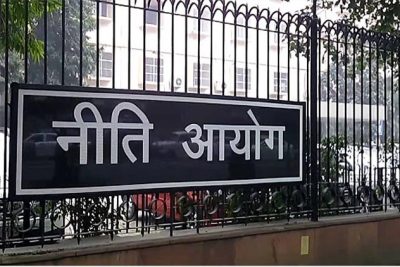National Institution for Transforming India (NITI) Aayog was set-up to foster cooperative federalism, provide knowledge support to union and state governments and monitor as well as evaluate its policies and programmes. The restructuring move had huge repercussions in terms of planning, allocation of funds and role in decision-making process. In the last two years since its inception, the restructuring has given rise to ambiguity regarding its advisory stature despite broader political representation. Niti Aayog has become a think tank that lacks teeth and neither central ministries nor states feel to heed its advice.

As one senior official at Niti Aayog has become a think tank that lacks teeth and neither central ministries nor states feel to heed its advice. As one senior official at Aayog put it, “We neither have the carrot nor the stick to get things done at any level. Hence, we are only advising states on various issues, but nothing much seems to be changing on the ground as most of them are resisting the ideas, saying they would not like to be dictated by the Centre”. With the moving of fund allocation responsibilities to the ministry of finance, it has been empowered with the allocation of funds to central ministries, apart from overseeing fund flow from the Centre to the states. At the end of the day, the scrapping of Planning Commission seemed to have helped the Finance Ministry flex its muscles and neutralised the need for further approval by replacing National Development Council (NDC)1 with the federal body named Governing Council. Thus, the pertinent question remains whether the new institution is merely an old wine in a new bottle, where states lobbying for an increase in central funds have remained a reality. Also, whether the government has subtly done away with the norm of granting special category status to states with the scrapping of NDC is also a matter of concern for policy-makers & civil societies.
“Though NITI Aayog has written a couple of policy papers on issues that involve the Centre and states, it's unclear how effective it has been in changing policy,” - Arvind Virmani, an economist and a former advisor to the Planning Commission. Despite the advent of NITI Aayog, it is yet to be clear how it has differentiated itself from the 65-year-old Planning commission in its action. It has been repeatedly reported that there is a lack of clarity in defining its roles. It gets reflected in the very fact that Aayog’s vice chairman Arvind Pangariya himself was unsure of his role and status in policy making process.

Though his position was accorded in the rank of a cabinet minister, he was never invited for any of the cabinet meetings, unlike his predecessor. Answering on this ambiguity, one of the full-time member of NITI Aayog, Mr. Debroy said – “Some role of NITI Aayog will never be in public domain. What NITI Aayog is giving as inputs on whatever policies to whatever ministries is not meant to be in public domain”. Yet he has added to the confusion further supplementing the fact - “What is NITI Aayog's role? One part of its role is to look at existing public spending schemes and link them to improvement in outcomes. But until I know what these schemes are, what I can do? This role will start from 2016-17”.
Also, there are severe apprehensions regarding expertise and manpower in the finance ministry which has been conferred the financial powers of erstwhile Planning Commission, without laying adequate thrust on capacity building. Domain experts, many of whom are from Indian Economic Service (IES), have not been shifted from Planning Commission to the Finance Ministry. Though, NITI Aayog has reduced 56 IES posts, retaining only 23 junior officers (those up to nine years of service) in a major restructuring exercise undertaken in August 2015, many of those 56 officers were not placed in the expenditure division of North Block, rather have been distributed across ministries to handle economic schemes housed in those ministries.
The Governing Council, comprising of Prime Minister, Chief Minister of States and Lt. Governors of Union territories represents Team India and replaces the highest decision-making authority – National Development Council (NDC). It voices diverse concerns and to protect interests of respective states in national policy making. However, the non-statutory nature of the council filter out the authoritative tone and makes its recommendation a mere piece of advice. In a strategic intent to invoke organic structure with a team spirit and a mission culture, the government has missed to give the required span of control to Niti Aayog and thus making it a place of punishment posting as remarked by N C Saxena, Former Secretary of Planning Commission.
The NITI Aayog, in its current form, is more evolved in structure but weaker in authority. It needs empowerment and capacity building to prevent it from becoming a retiring lounge for experienced bureaucrats and politicians. To enable NITI Aayog to perform its functions in a more effective manner, a constitutional status may put a greater emphasis on its policy recommendations and free it from the whims of the political bosses in power. However, it seems a distant reality keeping the political spectrum in both the houses of the parliament. The Standing Committee on finance, has strongly recommended the government to confer executive power on the Niti Aayog which would provide a major boost to its stature. And this can be done by amending the allocation of business rules in such a manner that clearly defines the powers and span of control of the institution, beyond a think tank.
--------------
About the Author:
This article has been written by Subhra Pratim Halder, Class of 2018, IIM Lucknow. He is a core member of Media & Communication Cell of his campus. The above has been documented as an extended study on 'Designing Work Organizations' course at IIM-L.




